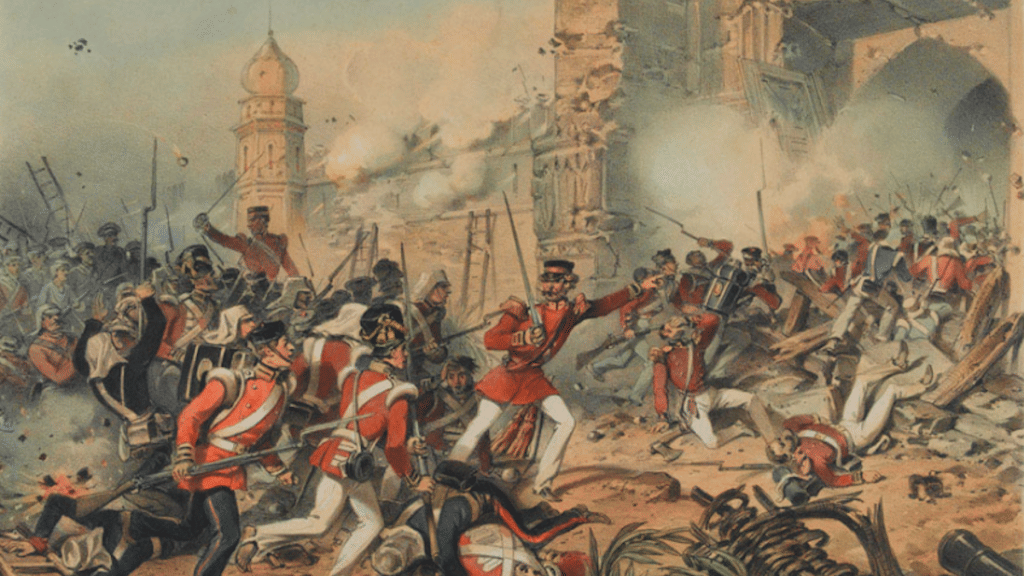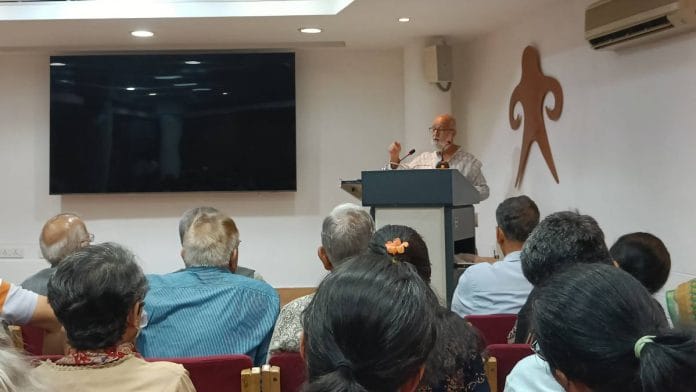New Delhi: In war, communication is paramount. The British learnt that bitter lesson on 11 May 1857, when the rebels captured Delhi within 24 hours.
“When they marched 50 miles from Meerut to Delhi, the one thing they did was cut the telegraph line. That was one clear indication that this was not a spontaneous ‘chalo maro’,” said documentary filmmaker and oral historian Sohail Hashmi, at a talk titled ‘1857 Rebels Reach Delhi’.
With the flair of a seasoned storyteller, Hashmi brought those events to life on 30 May at Delhi’s INTACH to a rapt audience of around 100 people, some sitting on the floor as all the seats were full.
When the rebels reached Delhi, no one had any idea what had happened.
“So not only was Bahadur Shah Zafar surprised, but also the British agents. The rebels understood what the telegraph does,” said Hashmi, adding that they dismantled the telegraph office near Delhi’s Calcutta Gate (now Kolkata Darwaza).
In his hour-long talk, Hashmi underscored three things. First, he dispelled the narrative that there was no foresight or planning behind the 1857 revolt. Second, he highlighted the rebellion’s inclusive spirit. And third, its democratic nature.
Before his talk, historian Swapna Liddle introduced Hashmi and also offered her own reflections on the revolt.
“It’s an episode that has been written about a lot, but still probably not very well understood. It was quite unique because nothing like that had ever happened on that scale before or after,” she said.
Also Read: This archaeologist is first to explore Sunderbans. He found evidence of an ancient civilisation
Not a sudden uprising
The first war of independence in 1857 was not a sudden eruption. It had been building up over decades of British suppression.
“Peasants were forced to move from subsistence agriculture to producing cash crops like jute and indigo. This led to massive famines, one after another,” said Hashmi. “It’s not as if British rule was benign and everybody was happy and singing ‘Long live the King’.”
But what helped build solidarity among soldiers was the rumour that British rifle cartridges were greased with pig lard and beef fat, offending both Muslims and Hindus.
“It spread like wildfire. I don’t know who thought of it but it was very effective,” said Hashmi.

In the British army, 65 per cent of the soldiers were Brahmins, Kshatriyas, and Bhumihars. The remaining 35 per cent were Jats, Ahirs, Gurjars, Muslims, and other less privileged groups. They all had separate kitchens.
“The 1857 rebellion brought all of them together,” added Hashmi.
On 11 May 1857, the 16th day of Ramadan, Bahadur Shah Zafar was offering tahajjud, the Islamic night prayer, when he heard a commotion. He asked someone to investigate. When informed that a group of rebels wished to meet him, he initially refused, saying he was an old and sick man who didn’t have any money or soldiers.
“But the rebels were not a band of angry men. Their actions were thought out and planned—to purposely march non-stop from Meerut through the night, led by their cavalry,” said Hashmi, warming up to the story. He described how Zafar quickly changed his mind, how he placed his hand on a rebel’s head. According to Hashmi it was a notable decision given that the last Mughal emperor had been reduced to a pensioner dependent on the goodwill of the British.
“Don’t forget that even when he was reduced to a mere pawn in the hands of the British, the aura that the Mughal king carried [held sway] all over the country. In the eyes of the people, the king of Delhi was the king of India.”
Also Read: Harappans were hungry for growth. It pushed them to build maritime contacts
‘A sharp legacy’
For Liddle, a key question is what the revolt represented for Delhi—and why the city became the heart of the revolution.
“The revolt does not break out in Delhi, but very soon Delhi becomes the centre, that is something important to remember,” she said. The British made Calcutta its capital, but in large parts of the subcontinent, people saw Delhi as the power centre. Its ruler at the time was the most suitable person to lead the revolt, said Liddle.
“The 1857 revolt is also an articulation of Indian identity, where people of different religions and regions were coming together and saying, ‘We will struggle for independence’,” said Liddle.
In tactical terms, it was a failure. The British regained and reconquered territories they lost. And Delhi was taken back by the colonists.
“You have a new era beginning. But it leaves [behind] a very sharp legacy,” she said.
(Edited by Asavari Singh)






